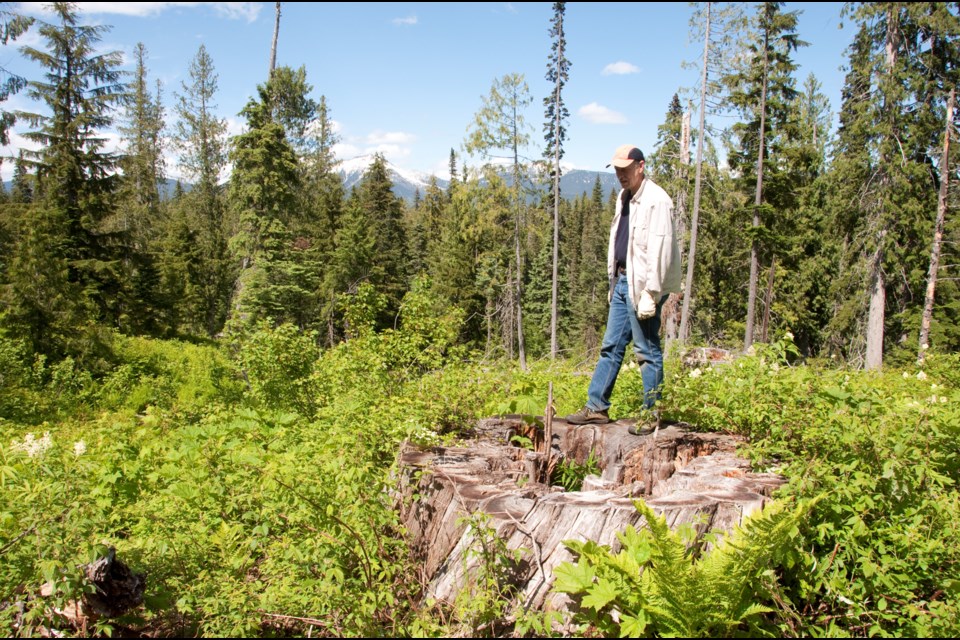The unprotected portion of British Columbia's inland temperate rainforest is in danger of being wiped out in nine to 18 years if logging continues at the current pace, an international team of scientists is warning.
The alarm was raised in a recently-published study of the forested portion of the province's interior wetbelt (IWB), a 16.46 million-hectare region that extends from the Pine Pass down through the Cariboo Mountains and into southeast B.C.
About 10.8 millions of the study area is forested of which inland temperate rainforest (ITR) covers 1.33 million hectares. A map of the area shows a spine of ITR sweeping down the middle of the IWB.
The ITR is also known as snow forest due to the groves of interior cedar, hemlock and Engelmann spruce that have taken root on the slopes of valleys where discharge from deep winter snows provide an abundance of coastal-like moisture.
Ancient Forest-Chun T'oh Whudujut Provincial Park 115 kilometres east of Prince George are perhaps the best-known example.
Using a system developed by the International Union for Conservation of Nature, they scored watersheds for their risk of extinction and found that IWB met the criteria for being endangered and ITR for critically endangered - just one stage short of collapsed.
They point to industrial logging as the main culprit.
Over the past 50 years, logging has removed 524,003 hectares of the trees in the ITR subzone, the authors state. Some 806,245 ha remains of which 235,449 ha are within provincial parks, leaving 570,746 ha exposed to logging.
Moreover, they say the rate of logging in the overall interior wetbelt has roughly doubled from 5.3 per cent in the 1970s to 10 per cent in the early 2000s before declining to 7.04 per cent in the 2010s but still within the band the authors say will lead to ecological collapse within 9-18 years.
The authors also note the pace has increased more recently with approvals for logging rising by more than 40 per cent from 2020 to 2021, "presumably reflecting strong demand for timber and a shift away from interior pine towards IWB spruce especially in upslope areas."
"Should this increase continue, it likely means the upper bound logging levels are reasonable for the foreseeable future at least for the higher elevation snow forests where spruce is mainly distributed that are prone to periodic insect outbreaks and subsequent post-disturbance logging."
According to the study, B.C. is home to just one of three inland temperate rainforests on Earth, the others being in the Russian Far East and Southern Siberia. B.C.'s "is on a trajectory toward what may very well be the most imperiled temperate rainforest on Earth."
They suggest the region should be given the same attention the Great Bear rainforest on the coast has received and doing so would help the federal government meet its pledge to protect 25 per cent of lands and waters by 2025 and 30 per cent by 2030.
As it stands, 13 per cent of the country's land base is under some form of protection. For B.C., it's 15 per cent and for "productive old growth" 10 per cent, according to the authors "far short of this modest target."
“The findings of this research are a wake-up call for the province of British Columbia,” said Dr. Darwyn Coxson, one of two professors at the University of Northern British Columbia who contributed to the study. “Urgent action is required in consultation with First Nations to identify and protect remaining intact watersheds within the inland temperate rainforest and interior wetbelt and to look at ways in which the existing protected areas network can be supported.”
The provincial government is in the process of developing an old growth strategy. In a response to a request for comment, B.C. Ministry of Forests, Lands, Natural Resource Operations and Rural Development noted that a technical panel of independent experts has been created "to ensure we’re using the best science and data available to identify at-risk old growth ecosystems and prioritize additional areas for deferral. There will be more to share in the near future."



